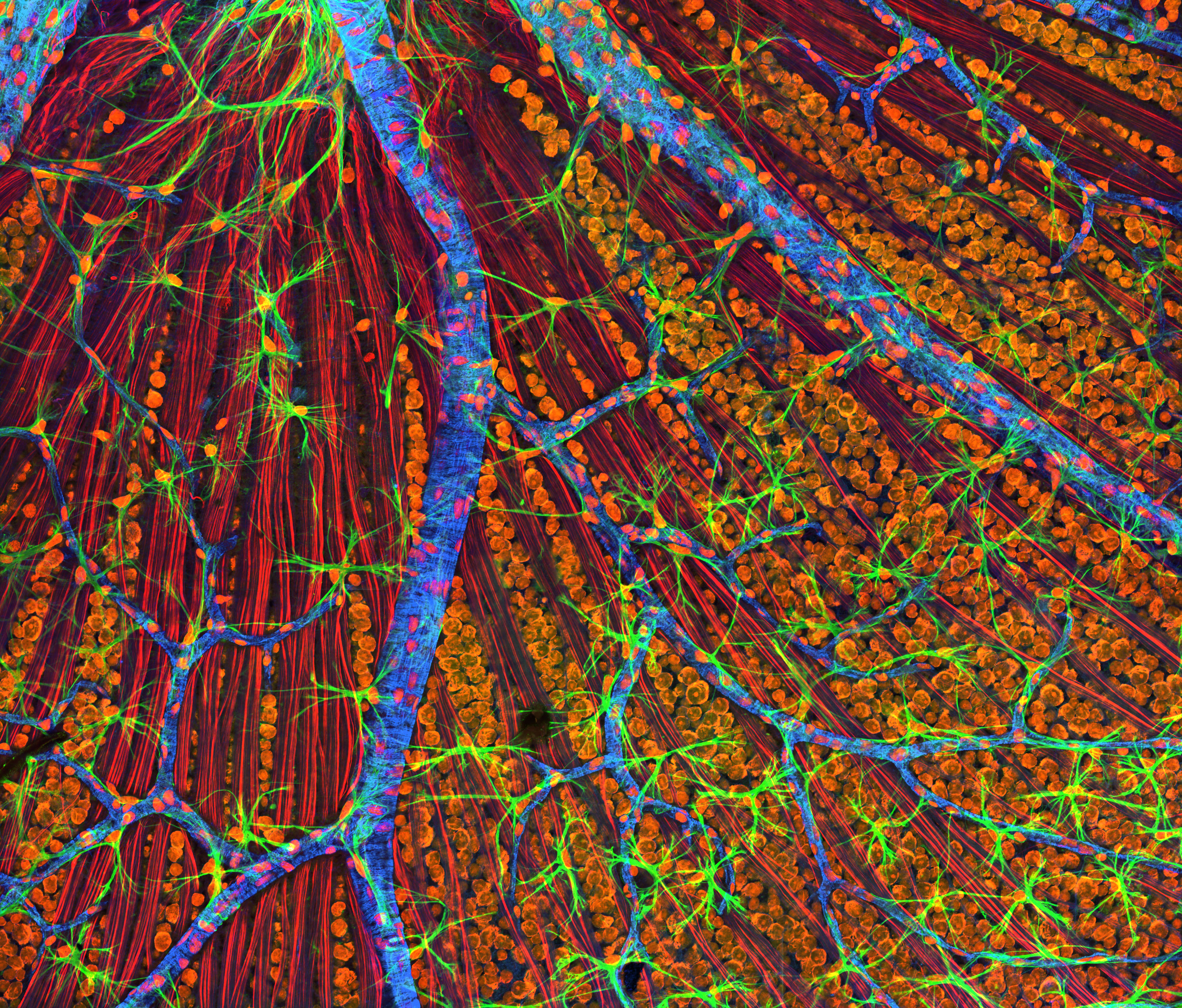Macular degeneration is the most prevalent cause of vision impairment and loss among people aged 55 years and older. Also termed age-related macular degeneration (AMD), this serious eye condition damages the macula, which is the most sensitive part of the retina of the eye. Located near the center of the retina, the macula consists of millions of light-sensing cells that provide sharp, central vision, enabling objects that are straight ahead of the eye to be seen. Normally, photoreceptors in the retina convert light entering the eye into electrical signals that are sent through the optic nerve to the brain, which interprets them as visual images. However, when the macula deteriorates and undergoes atrophy, the center of a person's field of view appears distorted, blurry, or dark, which hampers or eliminates fine vision, including the detailed vision necessary for such important activities as reading a book, threading a needle, and recognizing faces. See also: Brain; Color vision; Eye (vertebrate); Eye disorders; Light; Perception; Photoreception; Vision; Visual impairment

The onset of AMD can vary. Often, the loss of vision resulting from AMD is slow, occurring over the course of many years. In other individuals, the disease progresses more quickly and may lead to a loss of vision in one eye or both eyes. As AMD progresses, a blurred area near the center of vision is a common symptom. Over time, the blurred area may grow in size, and blank spots may form in the central vision of those affected; objects also may appear less bright. Although fine vision is often lost, peripheral vision is commonly retained. People with macular degeneration rarely suffer the total blindness that is seen in individuals with advanced glaucoma, cataracts, or diabetic retinopathy. Typically, in the 10–15% of patients who develop the wet or exudative form of AMD, the degeneration is linked to the growth of abnormal blood vessels in the macula, and these are amenable to treatment with laser surgery. In most cases, however, which are termed the dry or atrophic form of AMD, few measures can be undertaken to prevent the onset or progression of the condition. See also: Cataract; Diabetes; Glaucoma
The etiology of AMD is unknown, although its causes are likely to be a combination of genetic and environmental factors. Commonly, AMD runs in families; besides age, family history is the single-most important risk factor of this condition. Smoking, obesity, and sleep apnea are also well established as risk factors for macular degeneration. See also: Genetics; Obesity; Sleep disorders; Vertebrate eye development





